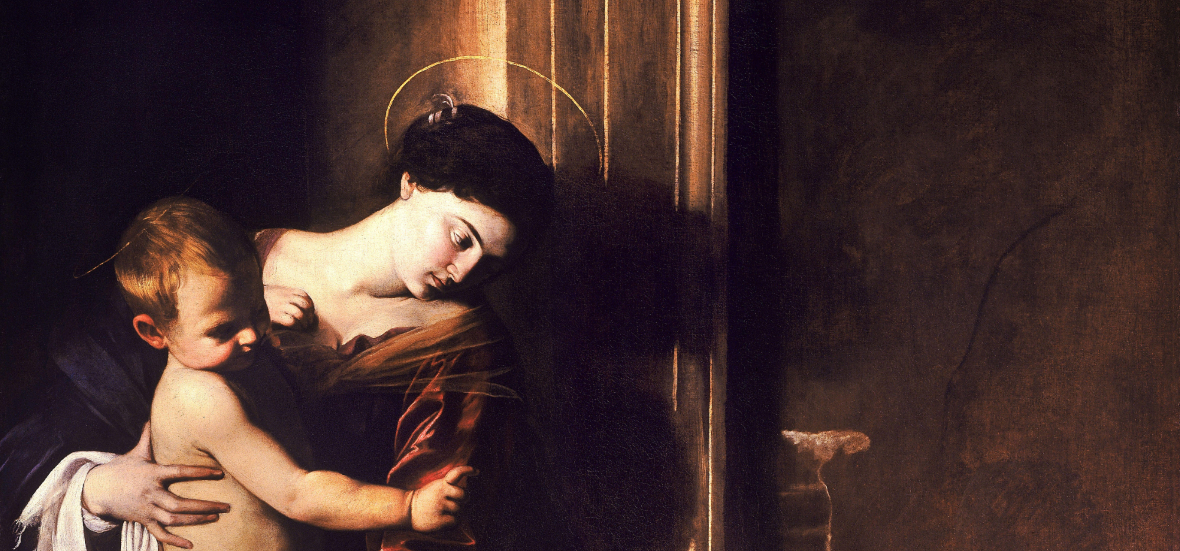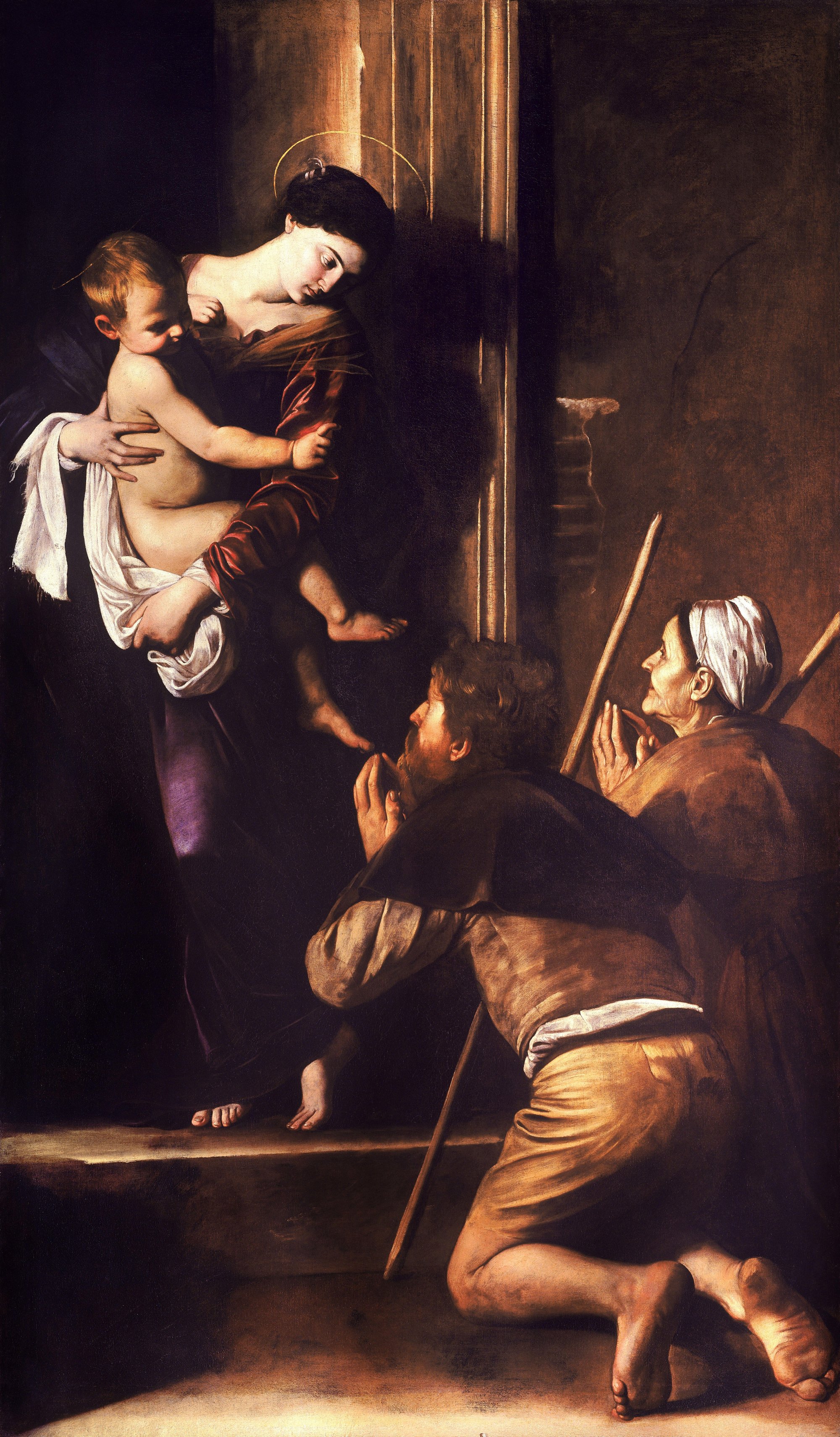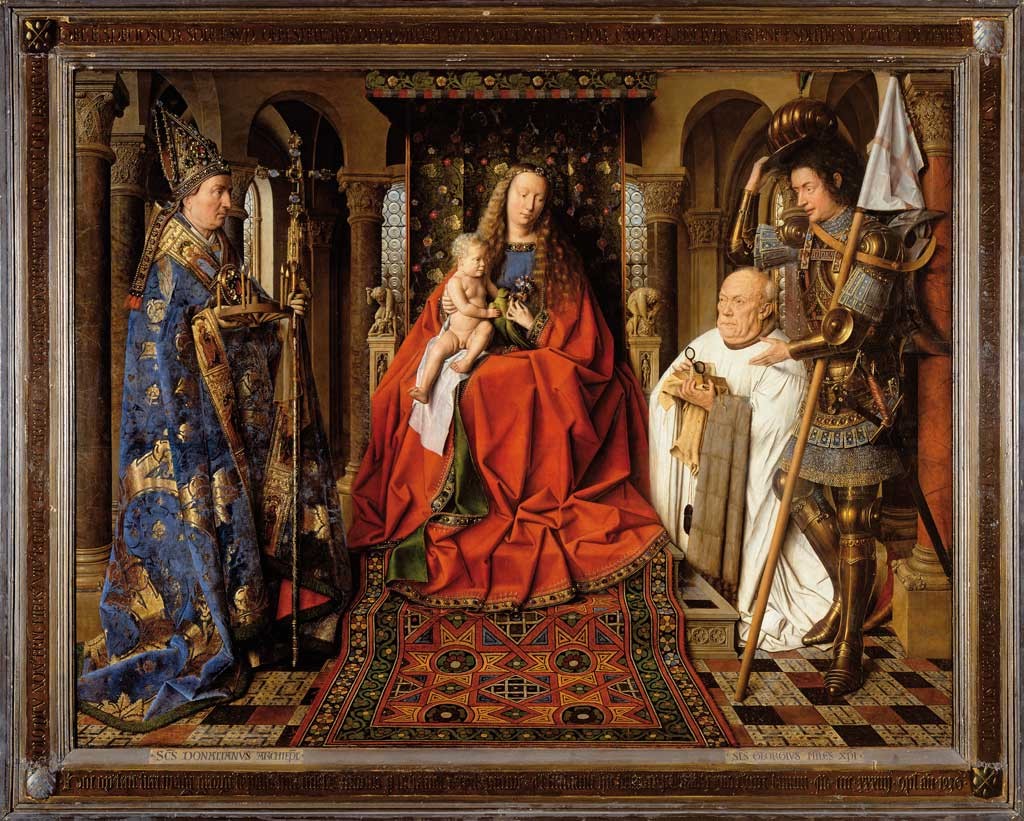
Caleigh McCutcheon looks at sacred art with a humble and modern message.
One of the great artists whose personal style heavily influenced sacred art was known as Caravaggio, a man who lived and worked in Rome during the early 17th century. He was very much the ‘bad boy’ of the art world, whose art constantly challenged the status quo.
Today we look at the Madonna di Loreto, which he completed around 1601.

The scene is a simple one – the Virgin Mary and the baby Jesus have appeared before a couple who have prayed to her. While at first glance, the subject of the painting might not seem unusual or controversial, when it was first unveiled, it caused an uproar.
As was popular at the time, clergy and wealthy families often had themselves painted alongside the Madonna and Child. While we might find it grandiose, to them it was a sign of their devotion to God. A famous example would be the artwork below: The Virgin and Child with Canon van der Paele by Jan van Eyck (1435).

Here, Madonna and Child are dressed in fine robes and sitting on an ornate throne. To the right is St. Donation, and to the left is St. George, who is presenting the Canon van der Peele to the Holy Family. The scene is magnificent and beautifully detailed, but the underlying truth is that Canon van der Paele was a high-ranking scribe for the Pope. It is because of his position in the church that makes him worthy enough to kneel before the Holy Family.
Looking back at Caravaggio’s Madonna di Loreto, Mary and the baby Jesus have instead appeared before two nameless pilgrims.
Their clothing is ragged and dirty, and neither of them own shoes. The couple is older, and their tan skin reveals a lifetime of working out in the sun: Life has not been easy for them.
Yet they prayed to Mary, and she has answered.
Today, a sentiment we know to be true is that God loves us all equally. But this was not always the case. As seen by Canon van der Paele, rank and status dictated even one’s closeness to God. But this painting broke the status quo. In the Madonna di Loreto, Caravaggio has claimed that these humble pilgrims are equally, if not more worthy of Mary’s love and attention.
The image of the Madonna herself has been also humbled. Mary is not seated on a throne but stands in a plain doorway before the pilgrims. She has come to them.
Her outfit is simple too, her dress plain in comparison to The Virgin and Child with Canon van der Paele. Mary has even arrived in bare feet. The halo around her head is a thin gold band, and it is the only clue to her divine nature. Baby Jesus does not have a halo at all, identified instead by His hand reaching out to bless the pilgrims.
This depiction of a Mary who would equate herself with the poorest of the poor was a huge shock to people in 17th century Rome. With one painting, Caravaggio changed the status quo.
Caravaggio painted a scene that could take place anywhere and could be anyone. The nameless pilgrims could be you or me.
Mary, as Mother of all of God’s children, does not care about your social status or your wealth. She does not discriminate with her love, and that is the message that lives on in Caravaggio’s artwork.
With one painting, Caravaggio changed the status quo. #catholicmom
Copyright 2020 Caleigh McCutcheon
Images (top to bottom): Caravaggio, Public Domain; Jan van Eyck, Public Domain
About the Author

Caleigh McCutcheon
Caleigh McCutcheon is the curator at the Museum of Family Prayer in North Easton, MA. She has a BA in English from Stonehill College and a MA in Art History from Glasgow University. Her Master’s thesis focused on the complexity and lasting power of the Pieta image in Christian art. She considers art to be one of the most powerful forms of prayer.


.png?width=1806&height=731&name=CatholicMom_hcfm_logo1_pos_871c_2728c%20(002).png)
Comments